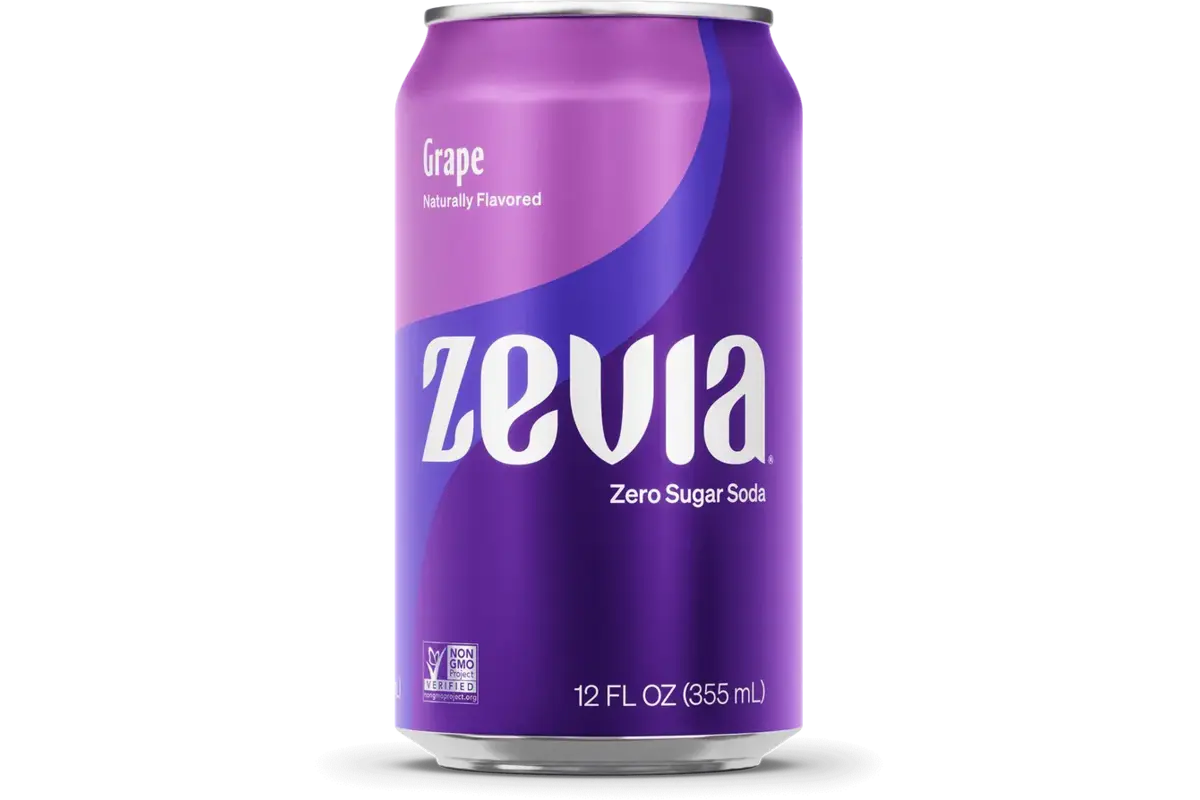Zevia has emerged as a popular alternative in the beverage market, particularly among health-conscious consumers seeking a zero-calorie, zero-sugar soda. Founded in 2007, Zevia’s core mission revolves around providing clean-label drinks made from non-GMO, plant-based ingredients, distinguishing it from traditional sodas laden with sugar or artificial sweeteners. This summary delves into zevia ingredients, exploring their origins, functions, and implications for health and dietary trends.
Core Philosophy and Market Position for zevia ingredients
Zevia markets itself as a clean-label, zero-calorie beverage, directly challenging the conventional soft drink paradigm. Unlike mainstream sodas that rely on sugar or high-fructose corn syrup, and diet sodas often sweetened with controversial artificial sweeteners like aspartame or sucralose, Zevia opts for stevia leaf extract. This plant-based, non-caloric sweetener is central to Zevia’s appeal for those avoiding sugar for health reasons, such as diabetes management or weight control, or adhering to specific diets like keto, paleo, or veganism. The brand’s commitment extends beyond sweetness; its base formula is notably simple, typically comprising carbonated water, stevia, natural flavors, and citric or tartaric acid. This simplicity resonates with the growing clean eating movement, emphasizing recognizable, minimally processed ingredients free from synthetic chemicals, artificial colors, and preservatives. Zevia’s rise aligns with broader health trends focused on sugar reduction, low-carb eating, and ingredient transparency, making it a favored choice in health food stores and increasingly mainstream retailers.
zevia ingredients:
Understanding zevia energy drink starts with dissecting its ingredient label, which is refreshingly concise compared to many sodas. The primary components are:
- Carbonated Water: This forms the base of every Zevia beverage. It’s simply purified water infused with carbon dioxide under pressure, creating the characteristic fizz. Zevia emphasizes using triple-filtered or purified water (often via reverse osmosis) to ensure a clean taste profile, free from impurities that might interfere with flavor or contribute unwanted minerals. Carbonation not only provides the sensory experience of soda but also enhances flavor perception and aroma, making the natural flavors more pronounced. Scientifically, carbonated water alone is generally considered safe for dental enamel and bone health, unlike sodas containing sugar and phosphoric acid.
- Stevia Leaf Extract: This is Zevia’s defining ingredient and sole sweetener. Stevia is a natural, zero-calorie sweetener derived from the leaves of the Stevia rebaudiana plant, native to South America. Indigenous peoples have used it for centuries. Commercially, the sweet compounds, known as steviol glycosides (especially Reb A), are extracted through a process involving steeping, filtering, and purifying the dried leaves, resulting in a highly concentrated, intensely sweet white powder. Studies suggest stevia may aid blood sugar control and support weight management due to its negligible caloric content and minimal impact on glucose/insulin levels. Regulatory bodies like the FDA and WHO deem high-purity stevia extracts safe for consumption within established limits. Zevia’s choice of stevia over artificial sweeteners or other natural alternatives (like erythritol or monk fruit) aligns with its plant-based, clean-label ethos, offering a familiar, accepted natural sweetener that fits various dietary restrictions (keto, vegan, diabetic-safe).
- Natural Flavors: This term, while sometimes vague to consumers, is legally defined by the FDA as flavoring substances derived from plant or animal sources without chemical alteration. In Zevia’s case, these flavors are explicitly plant-based and free from major allergens like dairy, soy, or gluten. The exact blend of botanicals (fruits, spices, herbs) used for each flavor profile (e.g., citrus oils for Cola, ginger extracts for Root Beer, fruit essences for Grape) is proprietary. Zevia uses “natural flavors” to simplify labels, protect formulations, and maintain flexibility in sourcing. While safe when approved (GRAS status via FEMA), the broad term can raise transparency concerns. Zevia addresses this by emphasizing non-GMO, plant-derived sources and confirming allergen-free status, although complete ingredient disclosure for these blends is not typically provided.
- Citric Acid: This naturally occurring acid, commonly found in citrus fruits, is a key functional ingredient in most Zevia formulations. Industrially, it’s often produced via fermentation using non-GMO Aspergillus niger. Citric acid serves multiple purposes: it adjusts pH for stability and shelf-life without needing synthetic preservatives, enhances and balances flavor profiles (adding tartness), and helps maintain consistency between batches. It acts as a natural alternative to phosphoric acid, commonly used in traditional colas, offering a potentially gentler acidity. Citric acid is generally recognized as safe by the FDA and is consumed naturally in many fruits. In Zevia’s context, its use alongside stevia (which lacks sugar) reduces the risk of dental enamel erosion compared to acidic, sugary sodas.
- Tartaric Acid: Less common than citric acid in Zevia’s lineup, tartaric acid appears in select flavors like Grape. Naturally found in grapes and tamarinds, it provides a sharper, more pronounced tartness that complements specific fruit profiles. Like citric acid, it contributes to flavor enhancement, pH stabilization, and preservation. It is also FDA-approved and considered safe in normal dietary amounts.
Understanding the ingredients is what ultimately convinced me to give Zevia Diet a real try — a moment I write more about here.
Product Line and zevia ingredients Variations
While the core ingredients listed above are consistent, Zevia’s expanding product line introduces slight variations to suit different needs:
- Zevia Soda (Original Line): Includes classic flavors like Cola (which contains caffeine from coffee beans), Ginger Root Beer (caffeine-free), and Grape (which uses tartaric acid).
- Zevia Energy: Adds natural caffeine (from coffee beans and guarana extract) for an energy boost, retaining stevia, natural flavors, and citric acid.
- Zevia Organic Tea: Incorporates brewed tea extracts alongside stevia, natural flavors, and sometimes lemon juice concentrate.
- Zevia Kids: Offers caffeine-free options with milder, kid-friendly natural flavors.
- Zevia Mixer: Designed for cocktails or standalone consumption (like tonic or ginger beer), maintaining the core ingredient philosophy.
These variations demonstrate how Zevia adapts its simple ingredient framework to create diverse offerings while adhering to its clean-label principles.
Health Implications and Considerations
Is Zevia healthy? From an evidence-based perspective, Zevia presents several advantages over traditional sodas. Its zero-calorie, zero-sugar profile makes it a suitable option for weight management and blood sugar control, particularly for individuals with diabetes (though consulting a healthcare provider is always wise). The absence of sugar eliminates the risk of feeding cavity-causing bacteria, benefiting dental health compared to regular sodas. The use of stevia, extensively studied and deemed safe, provides sweetness without caloric intake or glycemic impact. However, considerations remain. The presence of citric and tartaric acids, while natural and generally safe, can contribute to enamel erosion if consumed excessively, especially compared to plain water. Moderation is advised, and practices like rinsing with water or using a straw can mitigate potential dental concerns. Additionally, while Zevia avoids artificial sweeteners, some individuals may be sensitive to stevia’s taste or experience minor digestive issues with high intake. Overall, within a balanced diet, Zevia offers a significantly healthier alternative to sugar-sweetened and many artificially sweetened beverages.
Alignment with Clean Label Trends
Zevia exemplifies the clean label movement, which prioritizes simple, recognizable, minimally processed ingredients free from artificial additives. The brand’s commitment is evident in its Non-GMO Project Verified status, vegan certification, use of plant-based ingredients, and exclusion of artificial sweeteners, colors, and preservatives. This transparency and adherence to clean principles set it apart from many mainstream diet sodas that still contain synthetic components. Zevia’s success reflects the increasing consumer demand for products that align with health-conscious values and ethical considerations, making ingredient transparency not just a trend but a standard expectation.
Conclusion
In summary, zevia ingredients – carbonated water, stevia leaf extract, natural flavors, citric acid, and occasionally tartaric acid – are carefully chosen to create a beverage that is both flavorful and aligned with contemporary health and dietary preferences. Its foundation on plant-based stevia, commitment to clean labeling, and avoidance of sugar and artificial sweeteners make it a compelling option for those seeking a guilt-free soda alternative. While moderation is key, especially considering the natural acidity, Zevia represents a significant step forward in the beverage industry, offering a product that balances taste, health consciousness, and ingredient integrity. Understanding these ingredients empowers consumers to make informed choices that fit their lifestyle and wellness goals.
Health Disclaimer:
This content is for informational purposes only and does not replace professional advice, diagnosis, or treatment.
FAQ: Common Questions About Zevia Ingredients
Is Zevia really sugar-free and calorie-free?
Yes, Zevia ingredients include no sugar or calories. It is sweetened exclusively with stevia leaf extract, a natural zero-calorie sweetener.
Are Zevia’s natural flavors safe to consume?
Zevia’s natural flavors are plant-based and comply with FDA regulations. They are generally recognized as safe (GRAS) and free from common allergens.
Does Zevia contain any artificial sweeteners?
No, Zevia does not use any artificial sweeteners like aspartame or sucralose. It is sweetened solely with stevia leaf extract.

